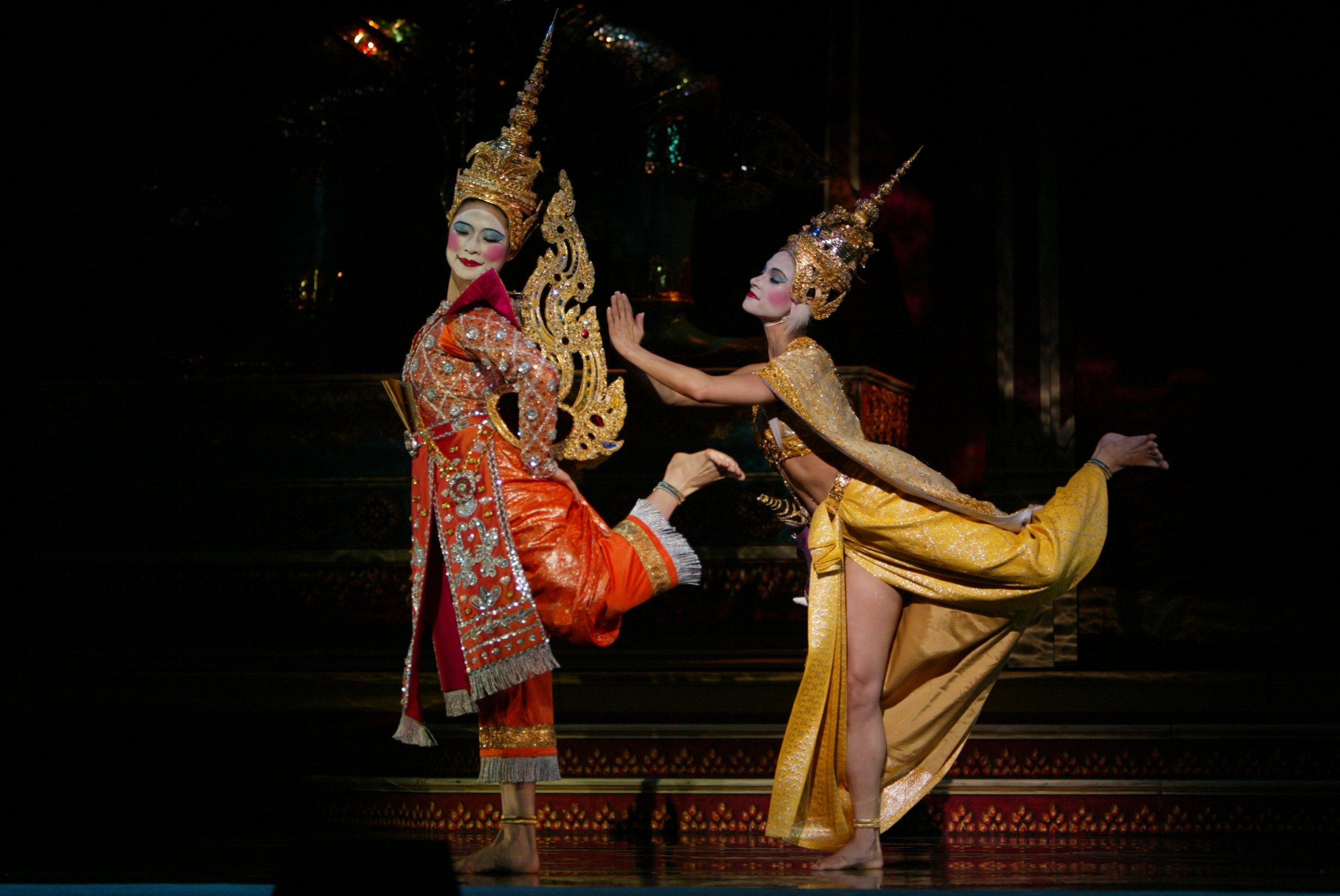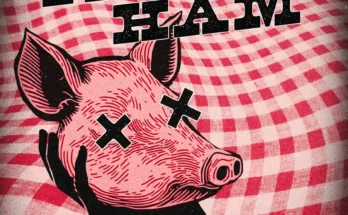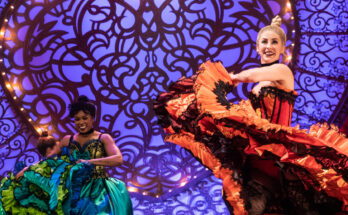
“The King and I” plays the Fox Theatre on Sept. 5-11.
When The King and I opened on Broadway in 1951, Yul Brynner’s Siamese monarch wasn’t even a leading character. Although his role was sizable, it was considered a featured part (aka second banana), with billing below the title.
That’s the last time that happened.
Much has changed since that March night in 1951, and not only the King’s star status. The term “Oriental,” widely used then to describe all things (and people) Asian, is no longer polite. Neither is Siam or Siamese. And Caucasian actors made up with dark pigments and slanted eyes have, thankfully, given way to actual Asian actors, as is the case in this Theater of the Stars staging, cast largely in New York.
The fact that The King and I was almost never created is but one part of its lore.
 It seems that Richard Rodgers and Oscar Hammerstein II weren’t keen on the project, suggested to them (reports vary) by their wives and/or Broadway star Mary Martin, English stage actress Gertrude Lawrence and/or Lawrence’s agent.
It seems that Richard Rodgers and Oscar Hammerstein II weren’t keen on the project, suggested to them (reports vary) by their wives and/or Broadway star Mary Martin, English stage actress Gertrude Lawrence and/or Lawrence’s agent.
They’d already proven themselves musical theater pioneers with Oklahoma! (1943), Carousel (1945) and South Pacific (1949), and neither wanted to do a star vehicle. (The King and I was pitched to them as a crowning achievement for the aging Lawrence.) And they didn’t think Margaret Landon’s bestseller Anna and the King of Siam could its musical potential.
Then they read the memoirs of Anna Leonowens, the British widow who did, in fact, instruct the children of Siam’s King Mongkut in the 1860s. They saw the 1946 movie Anna and the King of Siam with Irene Dunne and Rex Harrison. And they began seeing a musical.
What resulted is a spectacular landmark in American theater, one that is just as vibrant, exotic and timeless today as it was 61 years ago, with its unconventional love story and political backdrop.
“There is something about the musicals of Rodgers and Hammerstein that speak to each successive generation,” Ted Chapin, president of the Rodgers and Hammerstein Organization has said. “The R&H musicals are about people, and people don’t actually change as much as some might think. Our foibles, our hopes, our fears, our concerns, our points of view, our vulnerabilities are all somehow examined. … And this was never more true than in The King and I.”
TOTS Producer Christopher B. Manos puts it more simply, “Even if you took all the music out of The King and I, it would still hold up as a play.”
Luckily, we don’t have to. Rodgers and Hammerstein proved their first reaction to the project wrong in the m
ost glorious way — peppering their tale of politics, passions and personalities with “Hello, Young Lovers,” “Getting to Know You,” “We Kiss in a Shadow,” “Shall We Dance,” “The March of the Siamese Children,” and the peerless “Small House of Uncle Thomas” ballet, choreographed by Jerome Robbins, another musical theater genius.
With its gorgeous score and indelible characters, it’s sometimes easy to overlook the politics and morality woven into the story.
“The King and I is romantic, clear-eyed and highly moral,” critic Vincent Canby wrote in The New York Times when the 1996 Broadway revival opened. “Though ever-optimistic, it doesn’t deny intimations of darkness; it successfully absorbs them.”
Hindsight is a beautiful thing. Both Rodgers and Hammerstein worried that the show would flop. Its first performance, out of town in New Haven, Conn., ran four hours. Some backers recommended shutting it down right then, but R&H went back to work. “Getting to Know You”and “I Have Dreamed” were written during the Boston tryout, during which Hammerstein remained distressed. Most people were not concerned about whether the show was good, he complained, but whether it was better than South Pacific.
“It is a very strange play,” he said, “and must be accepted on its own terms.”

The King and I received positive, but not ecstatic, notices. Critical appreciation seemed to grow with second or third viewings, and the show built momentum as the run continued. It won five Tony awards — best musical, best actress for Lawrence, best featured actor for Brynner, scenic design and costume design, and has been a staple on professional stages and in high schools and colleges ever since.
“The King and I might well be the ‘other’ R&H masterpiece,” wrote noted theater scholar Ethan Mordden in his 1992 book Rodgers and Hammerstein, “as fulfilled a composition as Carousel, less experimental but more tightly built. Of the Big 5 — the musicals that chart the first eight years of the team’s 16-year partnership — Oklahoma! is the exuberant groundbreaker, Carousel the showpiece, Allegro the marvelous failure and South Pacific the brooding treat, so mournful yet so elated. But The King and I, for all the difficulty R&H had in writing it, is the work that perfects their revolution.”
::
Kathy Janich is Encore Atlanta’s managing editor. Her love affair with theater began at age 6, when she played one of the King’s children in a high school production of “The King and I.”



